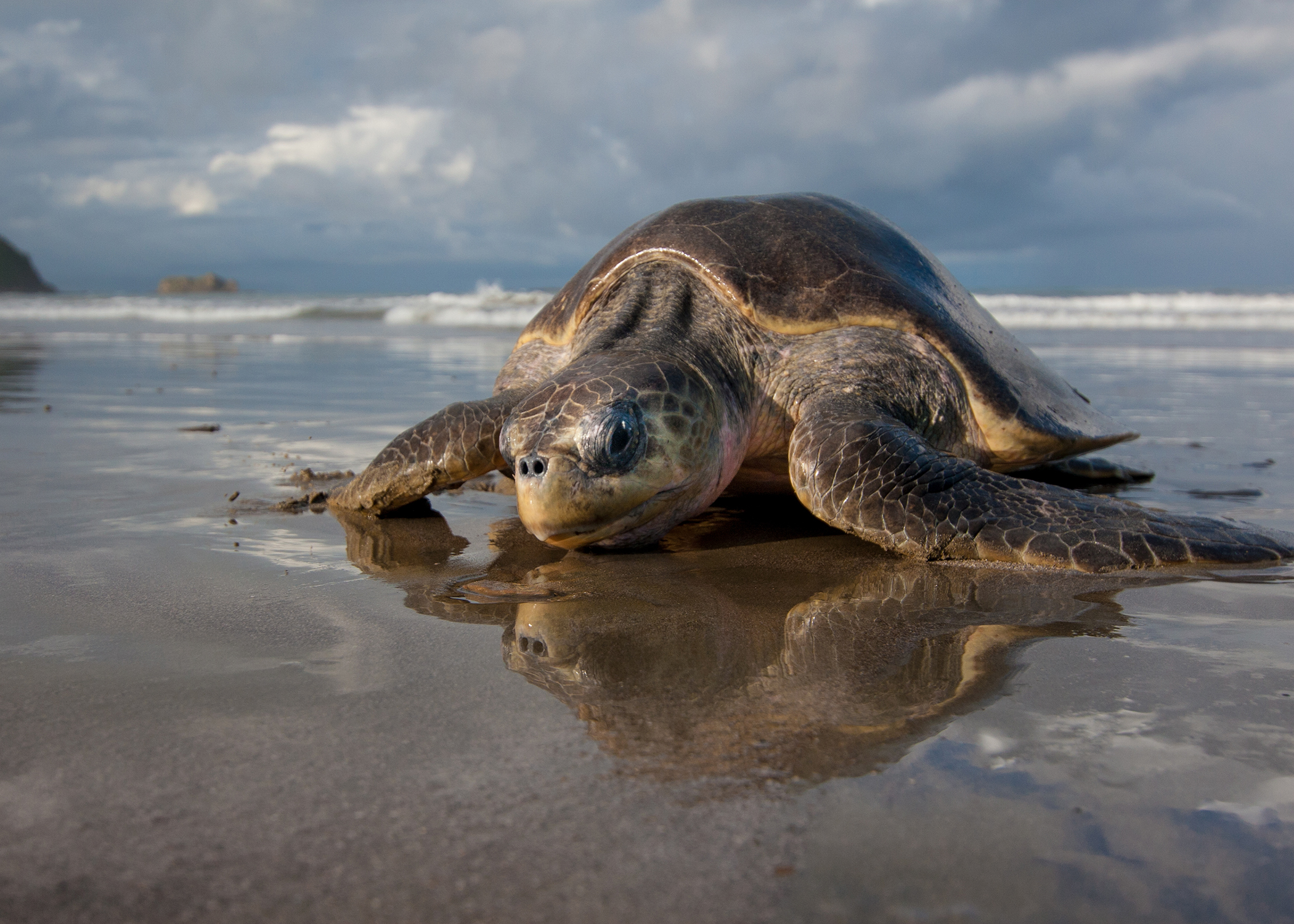
CLICK HERE for tickets to our Turtle Friend Beach Party on May 19th!
Sea turtles are some of the most charismatic animals living in our world’s oceans. They are part of the reptile family and can be found in all different shapes, sizes and colors. The earliest known sea turtle fossils are about 150 million years old–that means they have lived on planet Earth since before the dinosaurs! Although more species may have existed in the past, today there are seven species of sea turtles that live around the world in tropical and sub-tropical ocean waters.
There are four species of sea turtle that nest on the Pacific coast beaches of Nicaragua and Central America: the Leatherback (Dermocheyls coriacea), Hawksbill (Eretmochelys imbricate), Green (Chelonia mydas), and Olive Ridley (Lepidochelys olivacea). There are two other species of sea turtles that nest on the Atlantic coasts all the way up through the Gulf of Mexico and along the East coast of the United States: the Kemp’s Ridley (Lepidochelys kempii) and the Loggerhead (Caretta caretta). With Turtle Friend, we focus on the Pacific coast species, tagging turtles that primarily nest in the country of Nicaragua.
Most female turtles will return to the same beach to nest where they themselves hatched. However, nesting season varies depending on the turtle and the region of the world they are from. This is good and bad for their survival. Why? Well since the turtles like to return to the same beaches throughout their lifetime, poachers know exactly where to target them and can estimate the times they will be nesting to steal their eggs. However, returning to the same beaches also makes conservation a little easier since scientists also therefore know the beaches they will go to nest and lay their eggs. This way, scientists and conservationists can set up protection for turtles on the nesting beaches, to allow them to peacefully lay their eggs and return to the sea.
Unfortunately, wildlife trafficking is not the only threat to sea turtles and out of the seven existing species, all of them are endangered, some even critically endangered and on the brink of extinction! Aside from poachers stealing sea turtle eggs, the adult sea turtles are also sometimes killed for their beautiful shells and/or to sell their meat to eat. Sea turtles are also facing high levels of habitat destruction in relation to where they nest (the beaches), as well as in the open ocean. Part of the problem in the open ocean is floating trash which turtles will sometimes mistakenly identify as food or get tangled in and unable to free themselves. Commercial fishing also poses a threat to sea turtles in the water, as they are sometimes accidentally caught by nets or lines (what is called bycatch) which more often than not leads to their death.